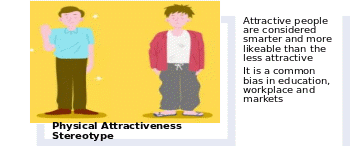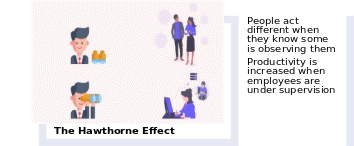The halo effect is one of the cognitive biases that indicate how an individual’s overall impression influences how others feel and think about them. For instance, a person who is considered ‘nice’ influences other evaluations, such as smartness. A single attribute can persuade people of all other aspects of a person. People tend to relate such a ‘nice’ person with positivity, which can be misleading. Celebrities are among the significant examples of the application of the halo effect (Ellis, 2018). People tend to believe that celebrities are kind, funny, intelligent, and near perfection because they are perceived as attractive, successful, likeable, and real-life achievers. In most cases, physical appearance plays a major role in the halo effect, where attractive persons are rated highly on positive traits than unattractive ones. For such reasons, the halo effect is sometimes considered as the principle of physical attractiveness stereotype.

Moreover, the halo effect stretches beyond attraction to other traits. For instance, attractive people will be referred to as kind, intelligent, or friendly. Such perceptions of attractiveness lead to biased judgments of other personal qualities. In educational settings, the hallo effect affects how teachers interact with different students. Instructors tend to have higher expectations of students they consider more attractive. In work settings, the halo effect is evident as a common bias in performance evaluations and appraisals. Supervisors are likely to rate employees based on a single trait that they consider attractive instead of their actual contribution or performance (Ellis, 2018). Marketers employ the halo effect in selling their products, such as when a celebrity endorses an item, it is more likely to make significant sales.
Confirmation Bias

Confirmation bias involves the likelihood of a person processing information by examining or interpreting what is consistent with their belief. It is often unintentional and leads to ignoring inconsistent data. The beliefs include a person’s expectations about a particular situation and ability to predict the results. A person feels that such convictions are logical, rational, and impartial due to their experiences and objective analysis of the situation (Pohl, 2018).
An individual is more likely to process information that supports their belief when it is self-relevant or imperative. For example, a person can be convinced that left-handed people are more intelligent and creative than right-handed counterparts because of previous encounters with brilliant left-handed personalities, like President Obama. In such consideration, the individual will put more emphasis on the evidence to support whatever they believe. If Person A supports the legalization of marijuana, they will seek new storylines and opinions on the product’s benefits. On the other hand, Person B, who opposes legalizing marijuana, tends to adamantly gain sources on the adverse effects and limit or ban the item. Such confirmations are aimed at supporting their current perceptions.
Hawthorne Effect

The Hawthorne effect entails one’s tendency to work or perform better when only participants are in an experiment. In such consideration, behavior change may be enhanced through attention to the individual receiver from the researcher instead of manipulation of independent variables. The Hawthorne effect can be attributed to how workers respond when supervisors shift attention to them in the workplace. For instance, productivity will be increased in the organizations because the manager monitored employees instead of changing variables in the production process (Einhorn, 2019). However, biases from the Hawthorne effect needs to be minimized to enhance the validity and reliability of the experimental outcomes. For example, employees need to work in natural settings to minimize or eliminate the demands they receive while working alongside supervisors or managers.
References
Einhorn, C. S. (2019). Investing in financial research: A decision-making system for better results. Cornell Publishing.
Ellis, G. (2018). So, what are cognitive biases? Cognitive Biases in Visualizations, 1-10. Web.
Pohl, M. (2018). Cognitive biases in visual analytics—A critical reflection. Cognitive Biases in Visualizations, 177-184. Web.
